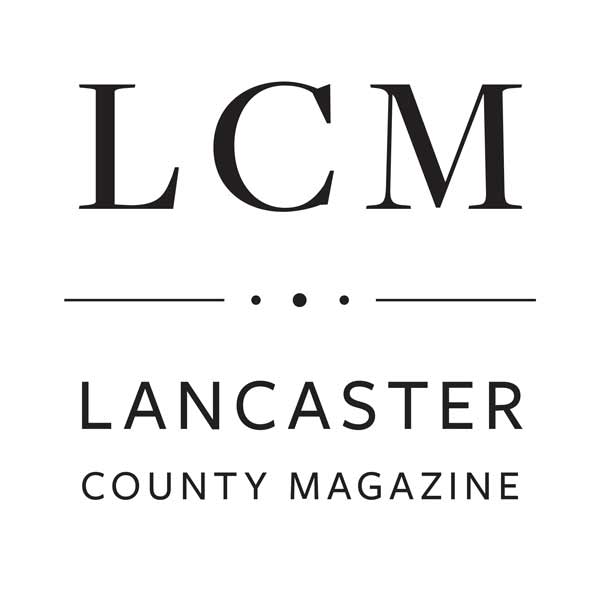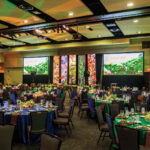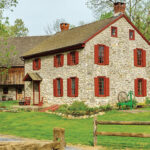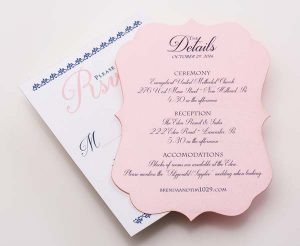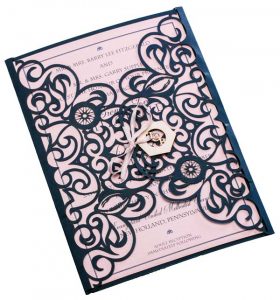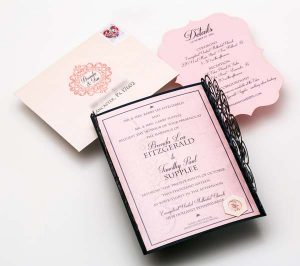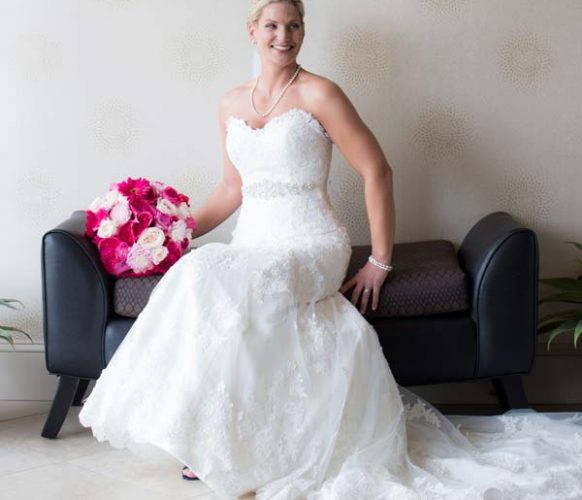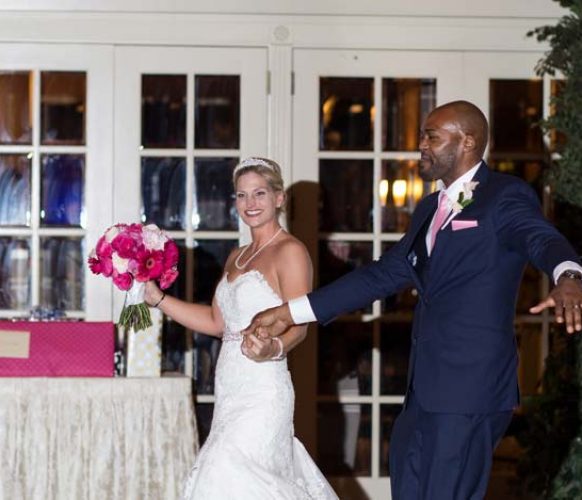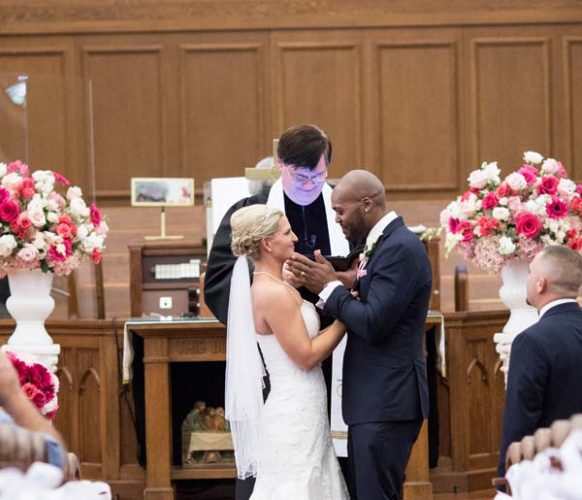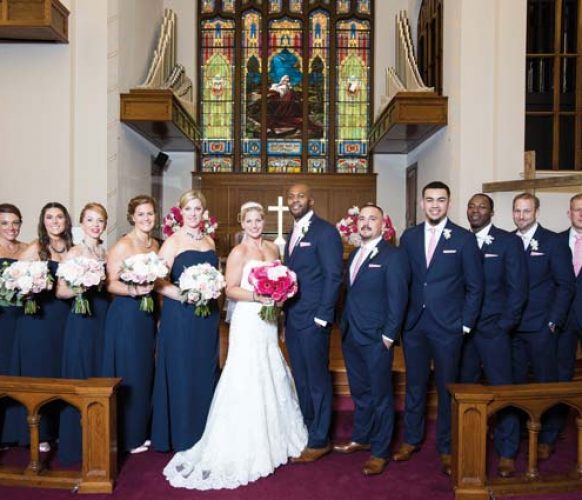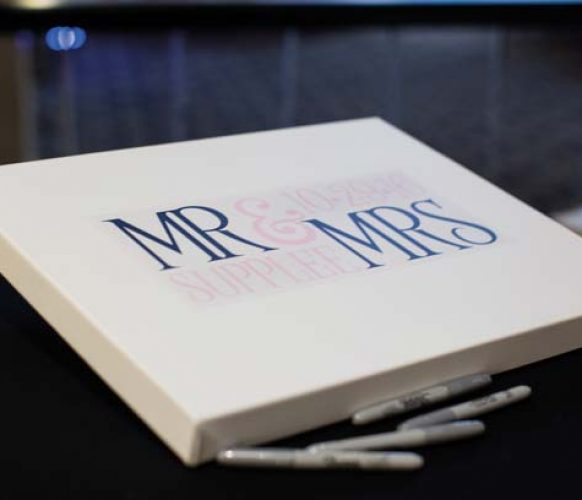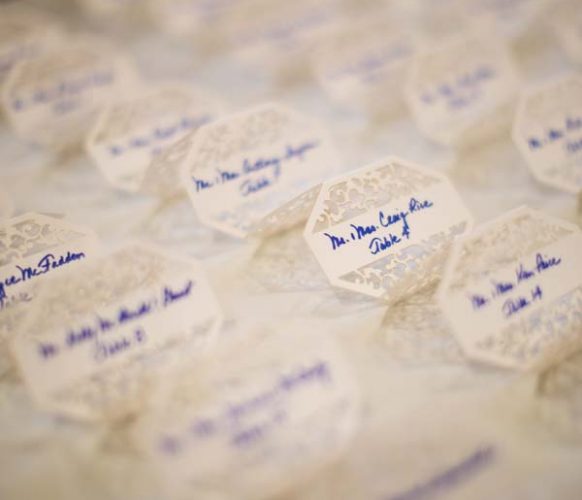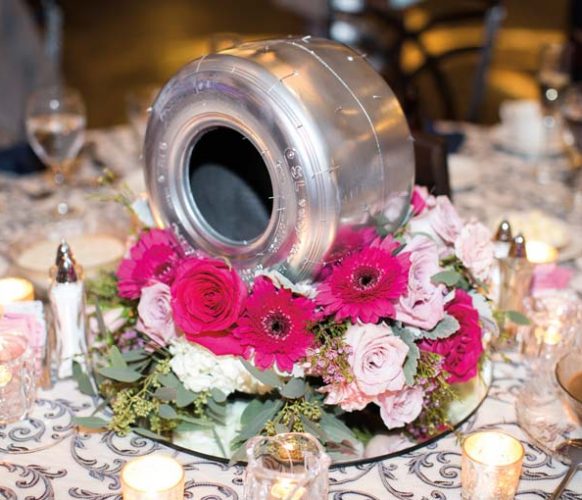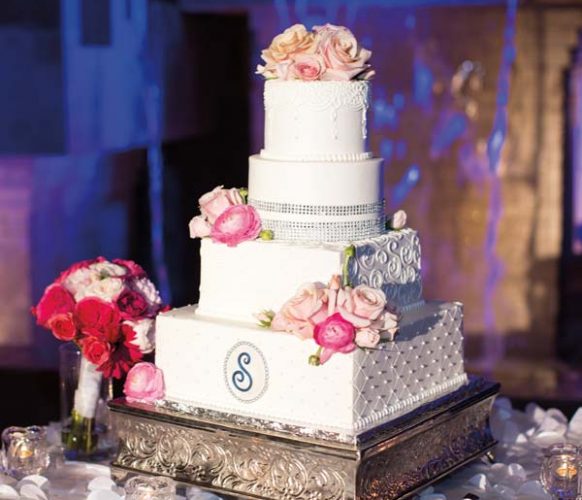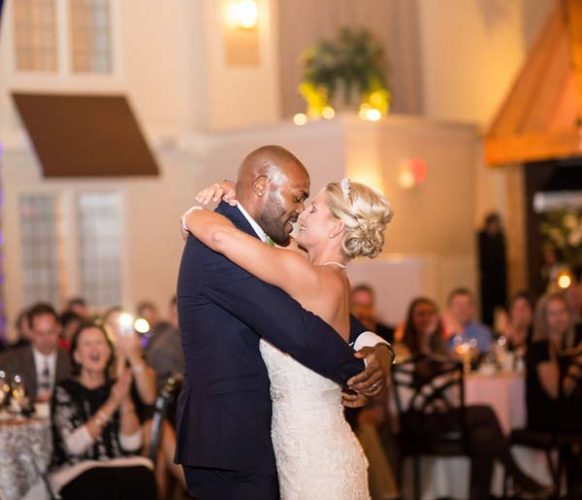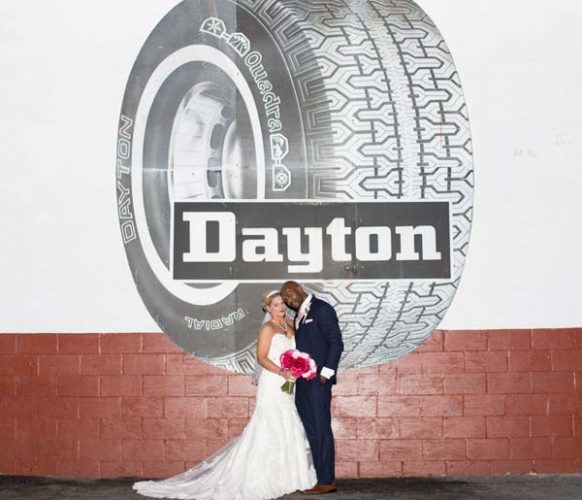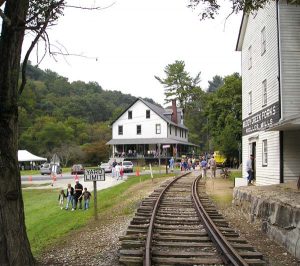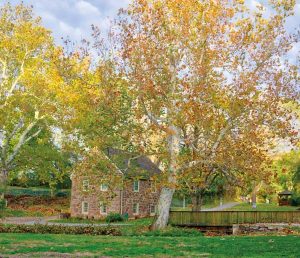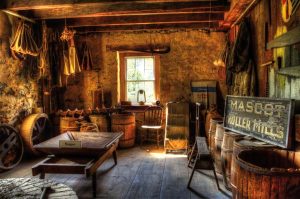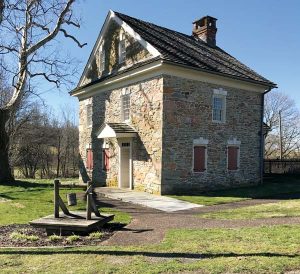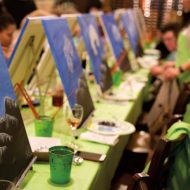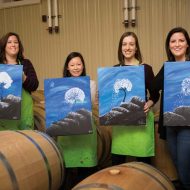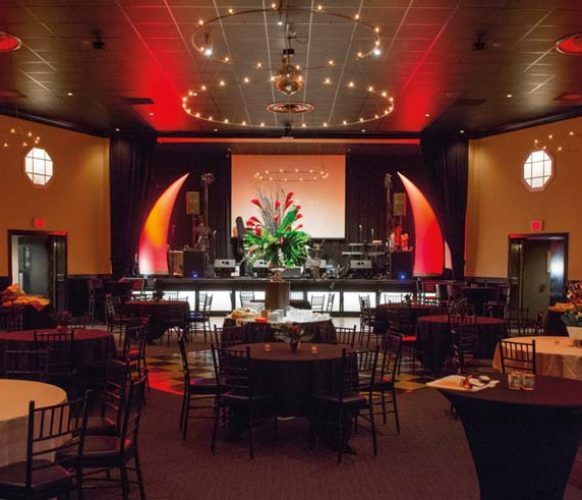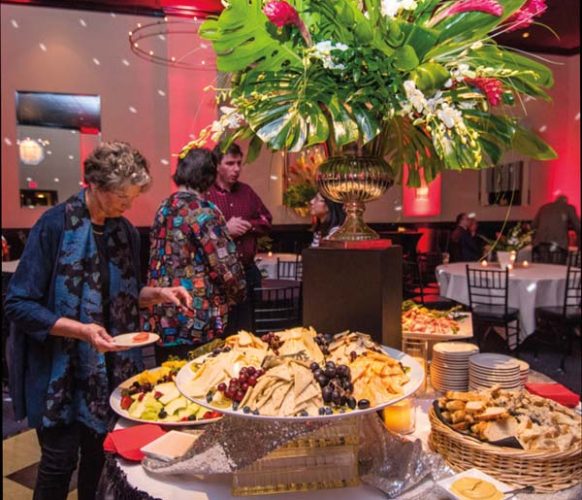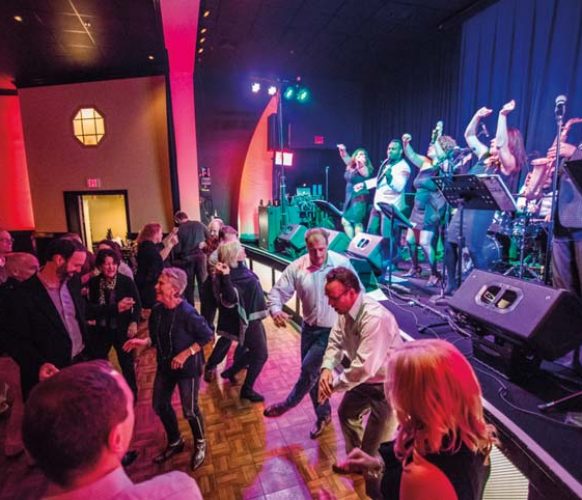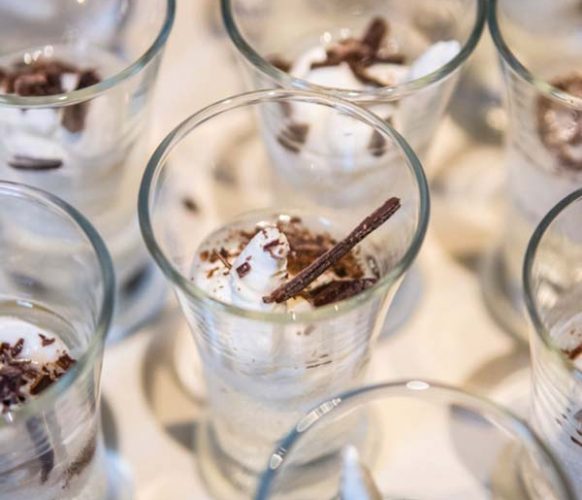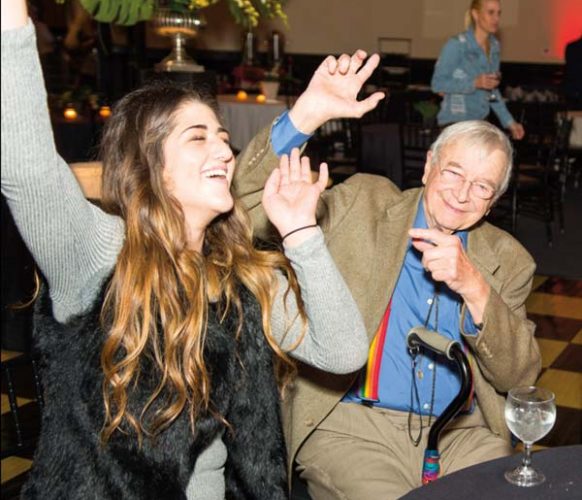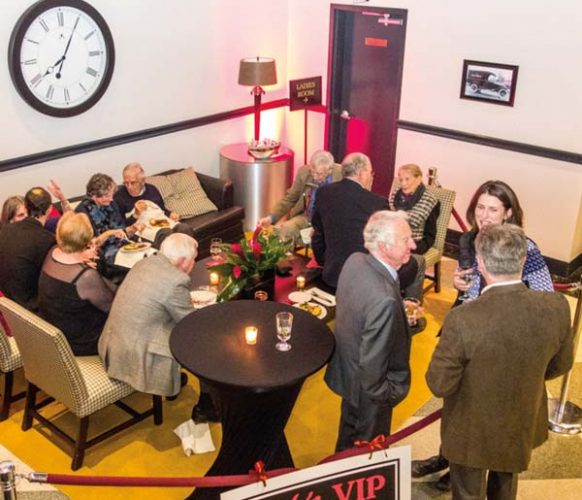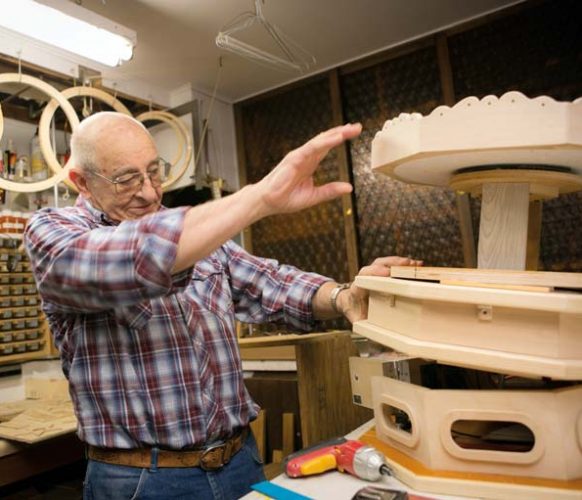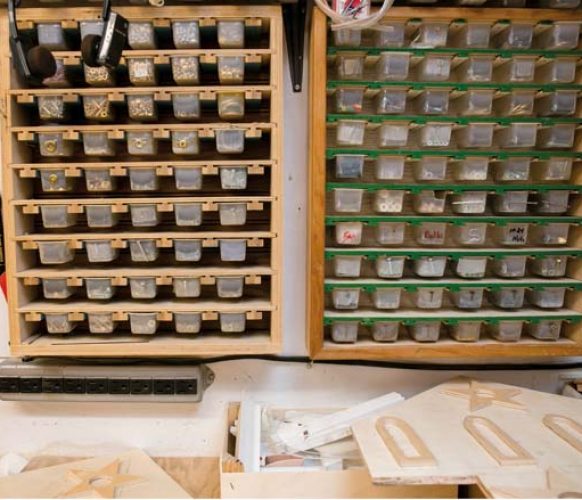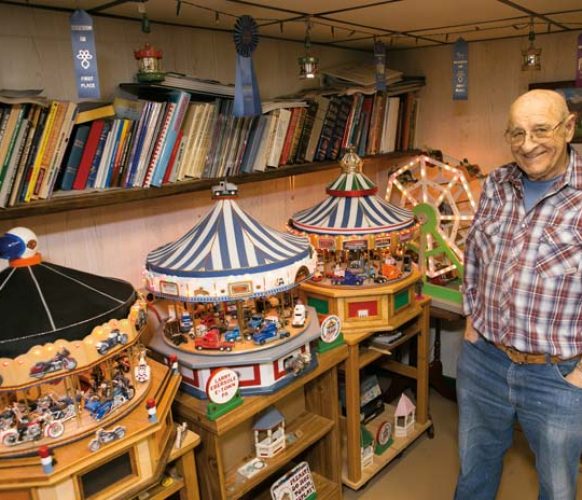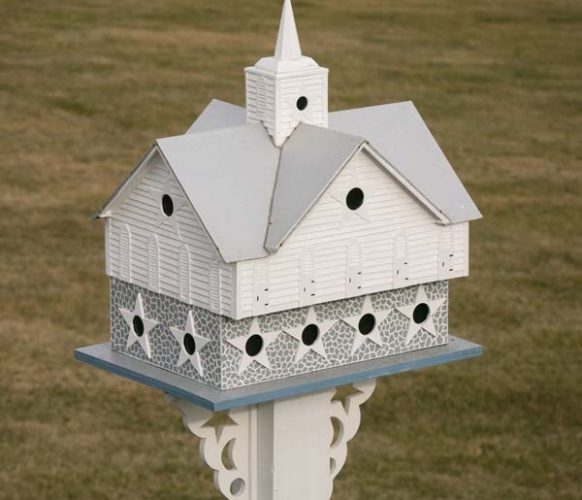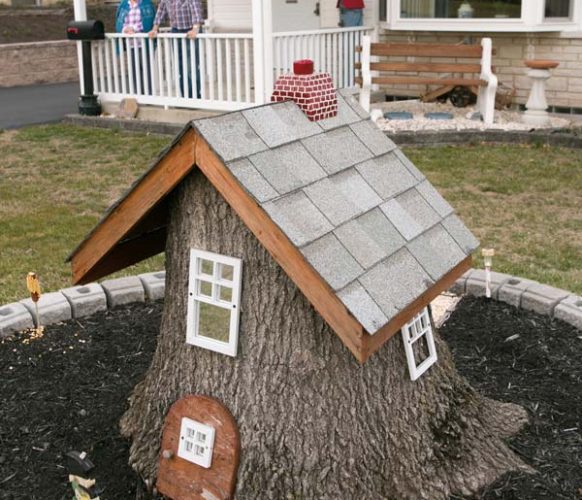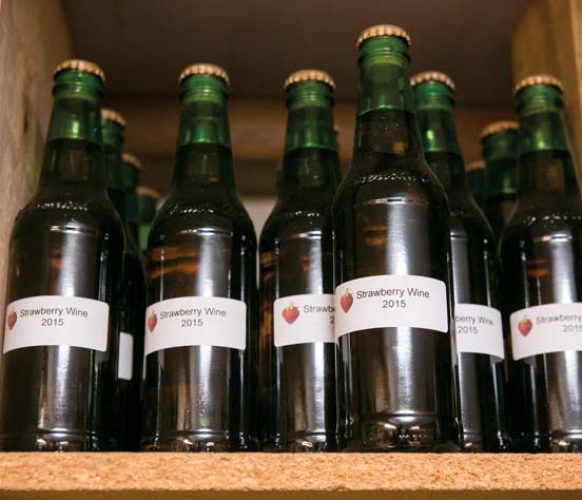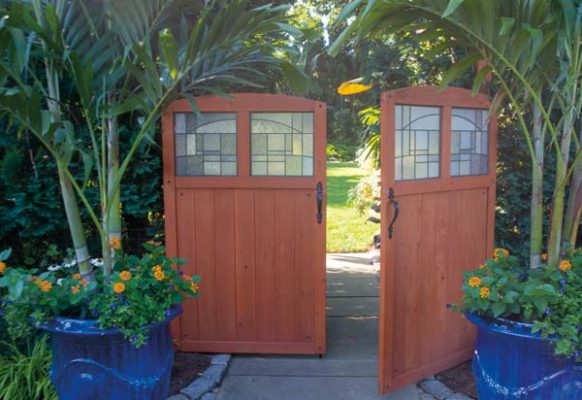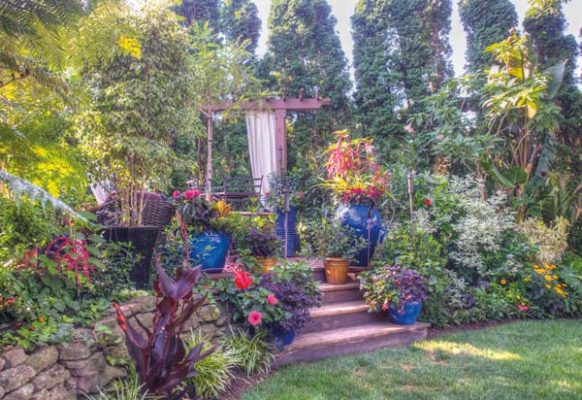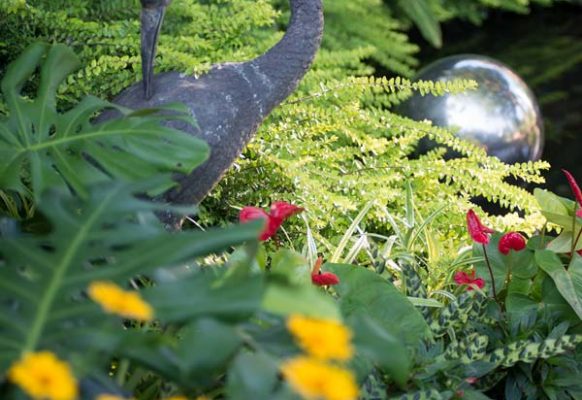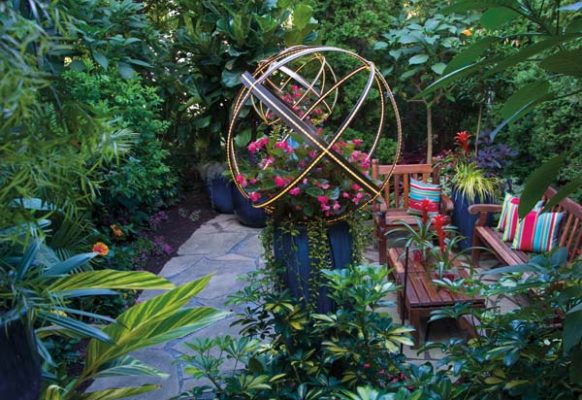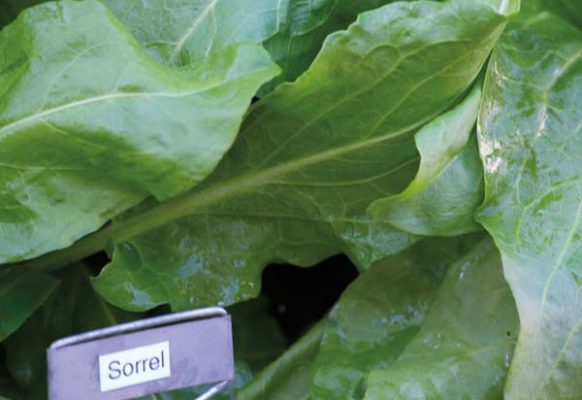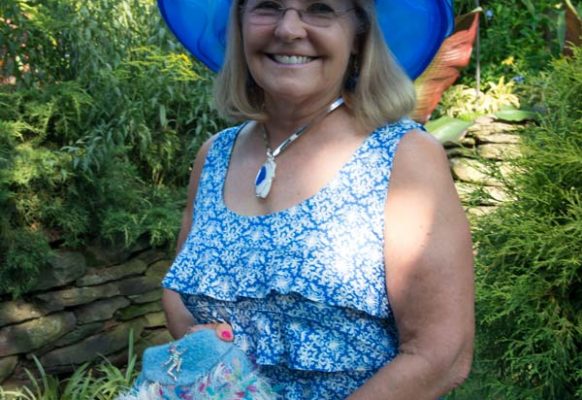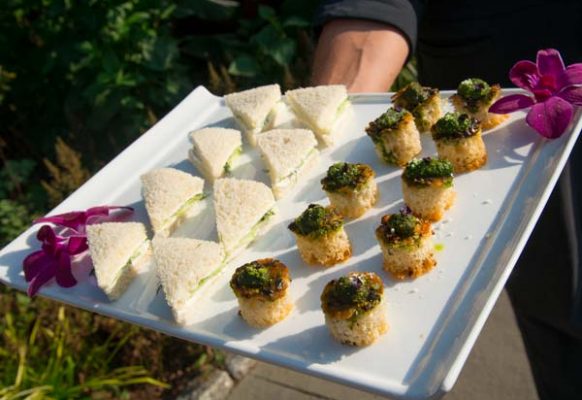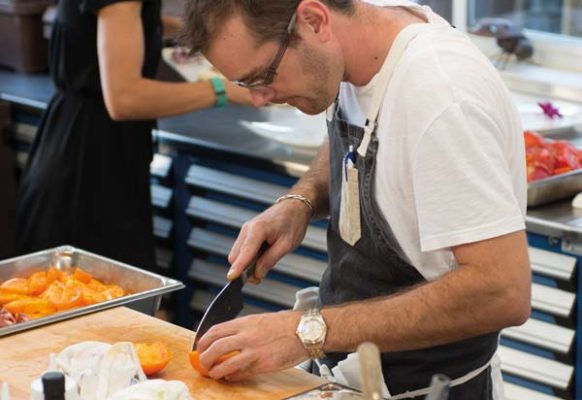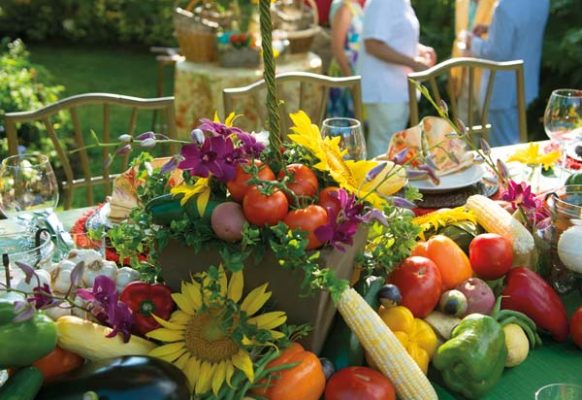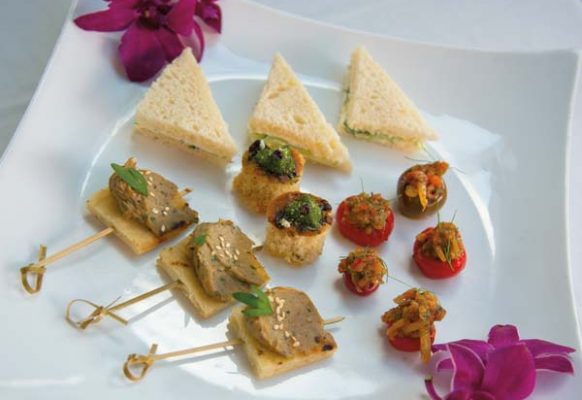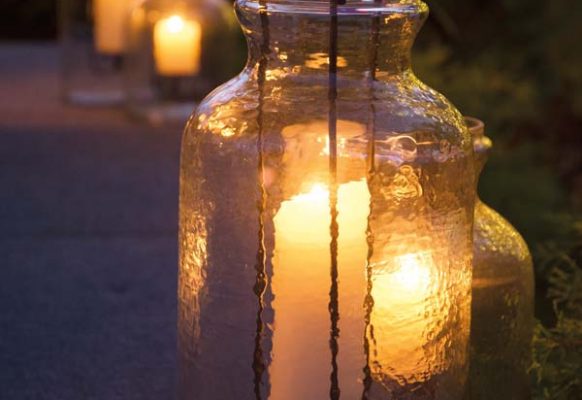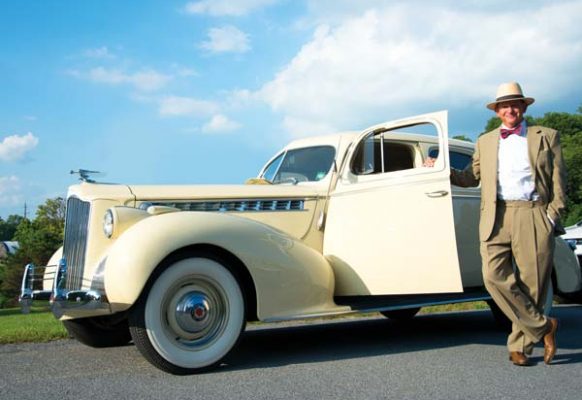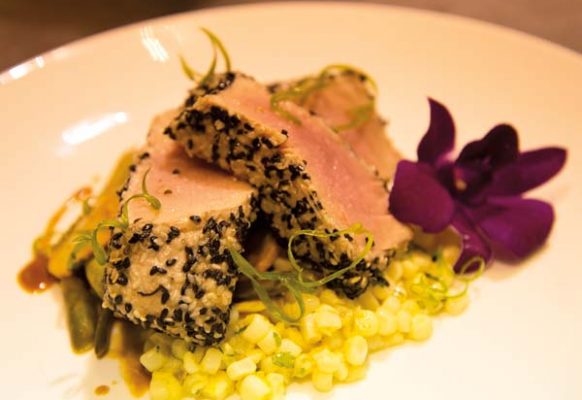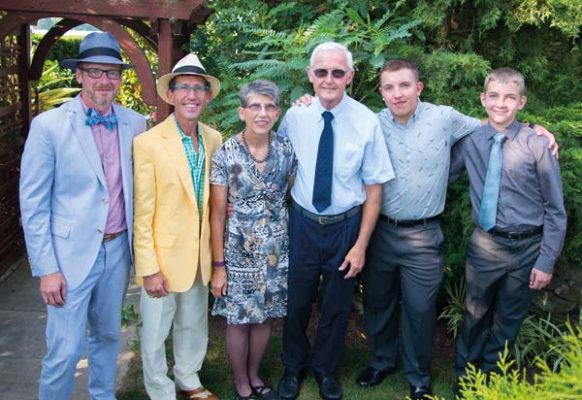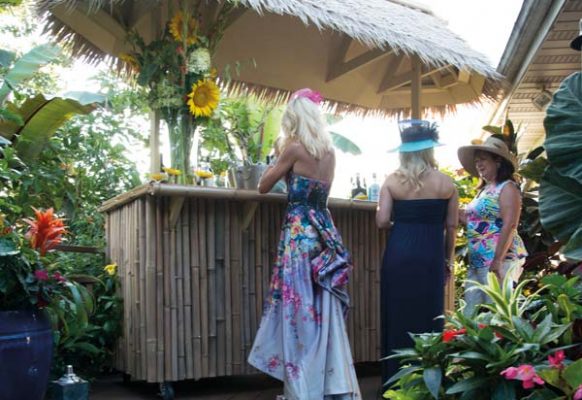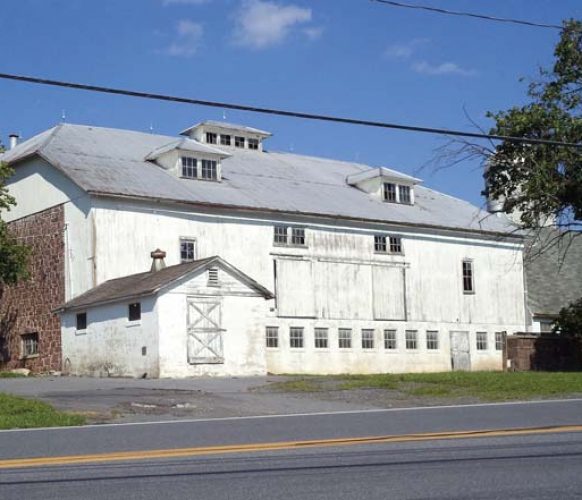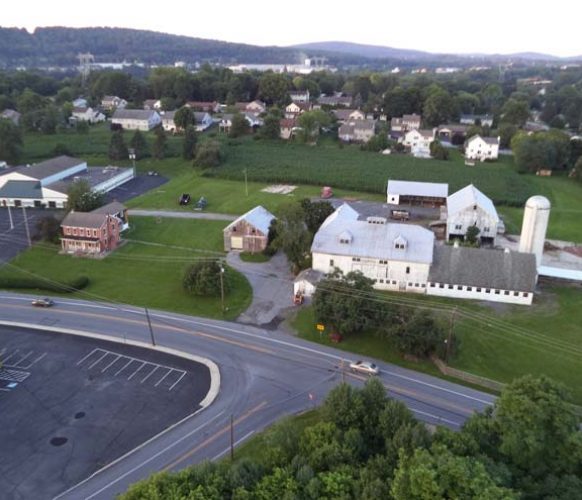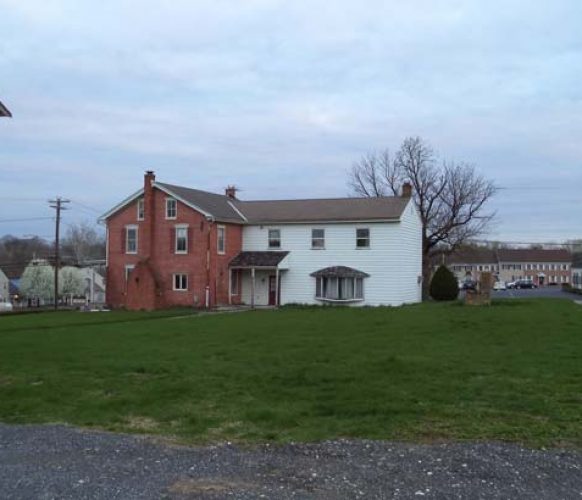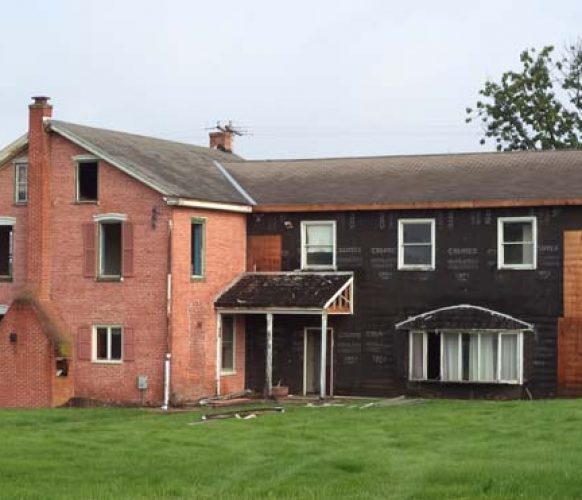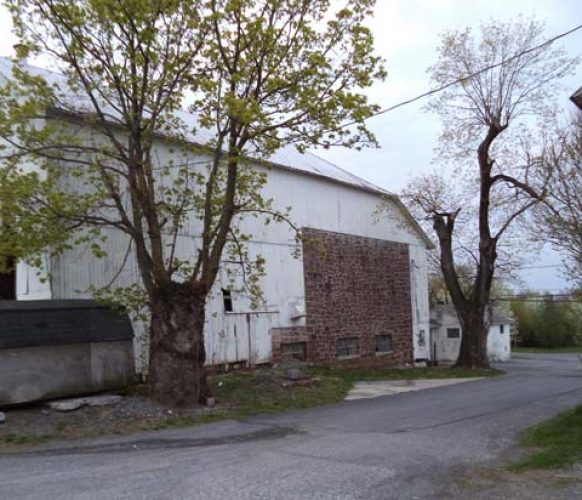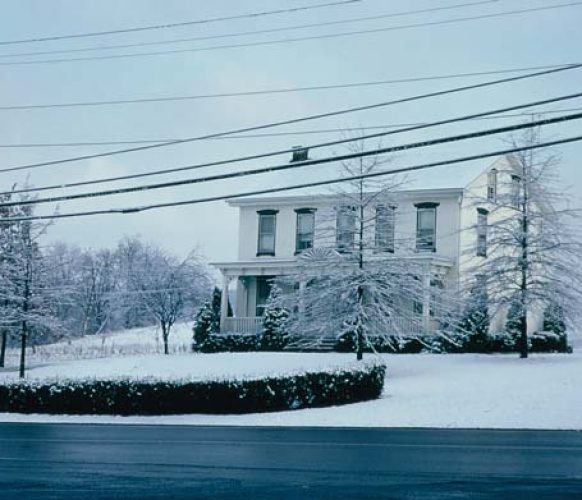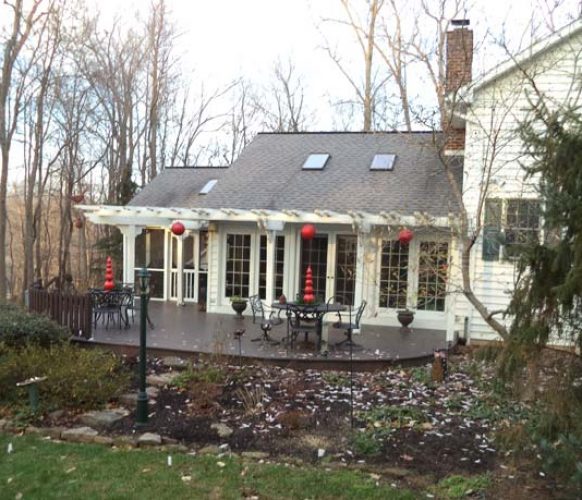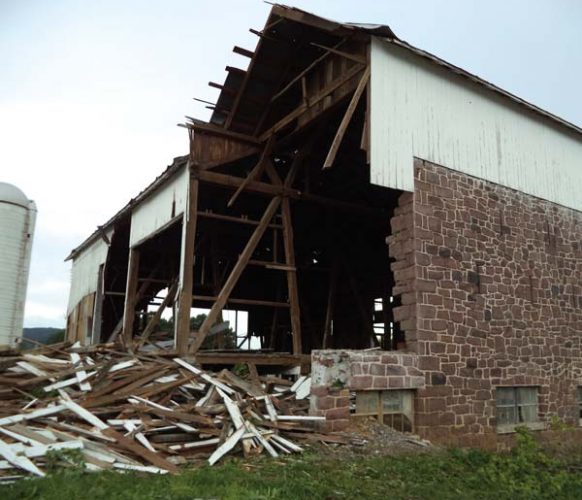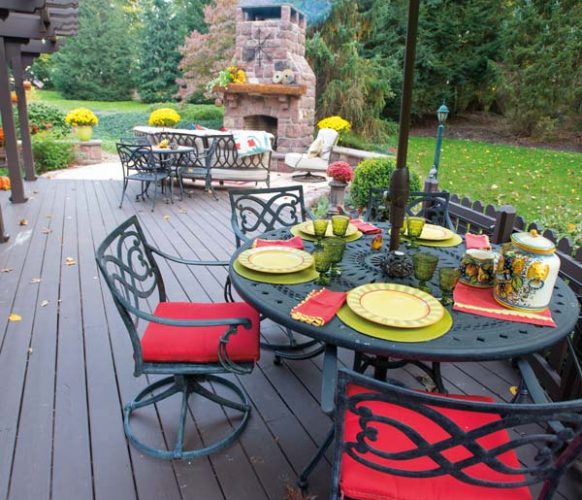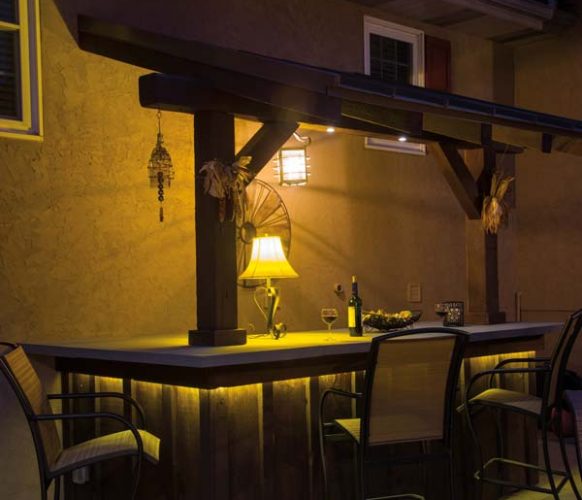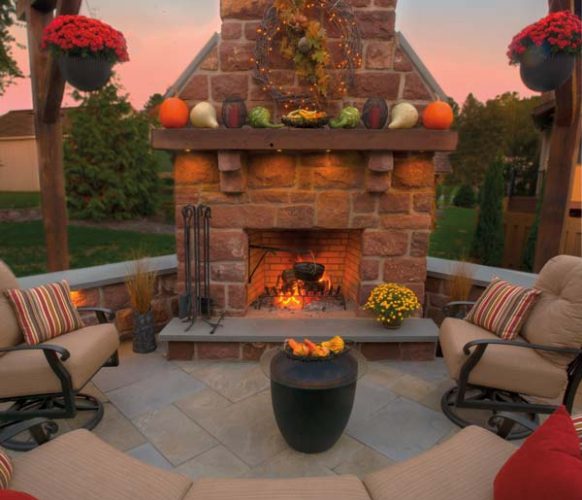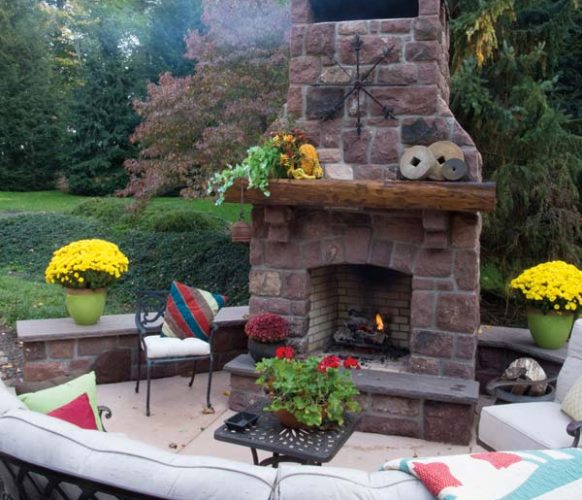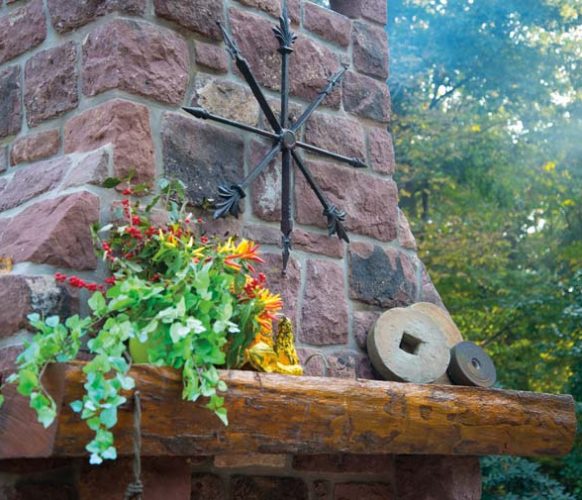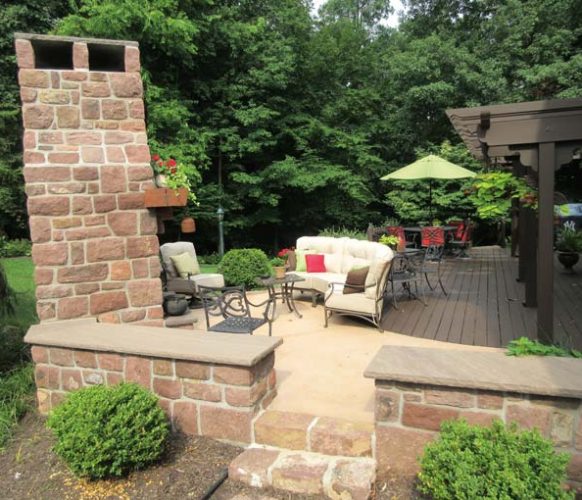Brenda Fitzgerald and Tim Supplee agreed on one important mission when they planned their wedding: Let’s make it personal. Wedding coordinator Joe Hess took their mission to heart, and the result was a one-of-a-kind wedding that showed their unique passions at every turn.
He’s obsessed with football. She’s immersed in the family’s tire business. They love each other.
And, they love to have fun.
As the third generation of the family business, H & F Tire Service, Brenda has grown up among the racks of Bridgestones and Goodyears, from huge truck tires to lawn-mower size. One day, while in wedding-planning mode, a stack of cute little go-kart tires in the showroom caught her eye. “Somehow, I’d like to use these small tires,” she mused to Joe Hess, seeing them as a way to show the significance the family business has played in her life. (It’s also how she met her husband, who is an H & F Tire employee.) The resourceful Joe made the miniature tires the centerpiece foundations for the reception tables, dressing them up for the occasion with silver spray paint; the floral designer softened the look with her embellishments.
It must be the wedding god’s idea of fun that every couple’s wedding day includes an unexpected “glitch,” whether minor or major. Perhaps it’s to give the couple something to laugh about in the decades to come. For Brenda and Tim’s day, the glitch involved the dress. In the minutes before Brenda was to walk down the aisle, the back zipper gave way, or as Brenda describes it, “the dress exploded.” Cool heads prevailed, the seamstress was called and, after a mad dash from Mount Joy, Brenda was securely stitched into her wedding dress for the rest of the day. “Tim cut me out of it at the end of the day,” she notes. Perhaps it’s a family tradition: Brenda’s parents were married on June 24, 1972 – the day tropical storm Agnes hit central Pennsylvania with all her might.
From there, it was smooth sailing. Following a traditional ceremony at New Holland Lutheran Church, Joe let the couple’s personalities take the lead at the reception. Guests were greeted with two signature drinks: in honor of the bride, the All Wheel Drive, and for the groom, the Endzone.
The couple took advantage of the Eden Resort’s high-ceiling courtyard with a 16-foot video screen that commanded the attention of the crowd with the music videos and stills that were carefully synched with the DJ’s playlist. When the newlyweds took the dance floor and showed off the results of their dance lessons, the video screen displayed photos of their pre-couple lives, from their toddler-through-teen years.
After saying good-bye to the last of their reception guests, there was one more stop to make in order for the wedding album to be complete – a photo in front of the family business storefront.
The couple arrived at work on Monday following their wedding weekend, with a getaway to Jamaica scheduled a few months later. But, perhaps the best part of the deferred honeymoon was going to Super Bowl LI in Houston, Texas. When asked to describe that experience, the ultimate football fan says, “I can’t even explain it.” We understand, Tim.
How did you do that?
Wedding Planner: Joe Hess Consulting, joehessconsulting.com
Invitation: Pa-py-ri, pa-py-ri.com
Floral Design: Stacia McClune-McComsey, Petals with Style, petalswithstyle.com
Cake: Rosie’s Creative Cakes, rosiescreativecakes.com
DJ: Chris Perry, 717-371-6689
Hair Stylist: Salon Posh, lancastersalonposh.com
Makeup: Ego Trip Hair Salon, Lancaster, 717-945-7754
Photography: Ole Hongvanthong, photole.com
Reception Venue: Eden Resort, edenresort.com

